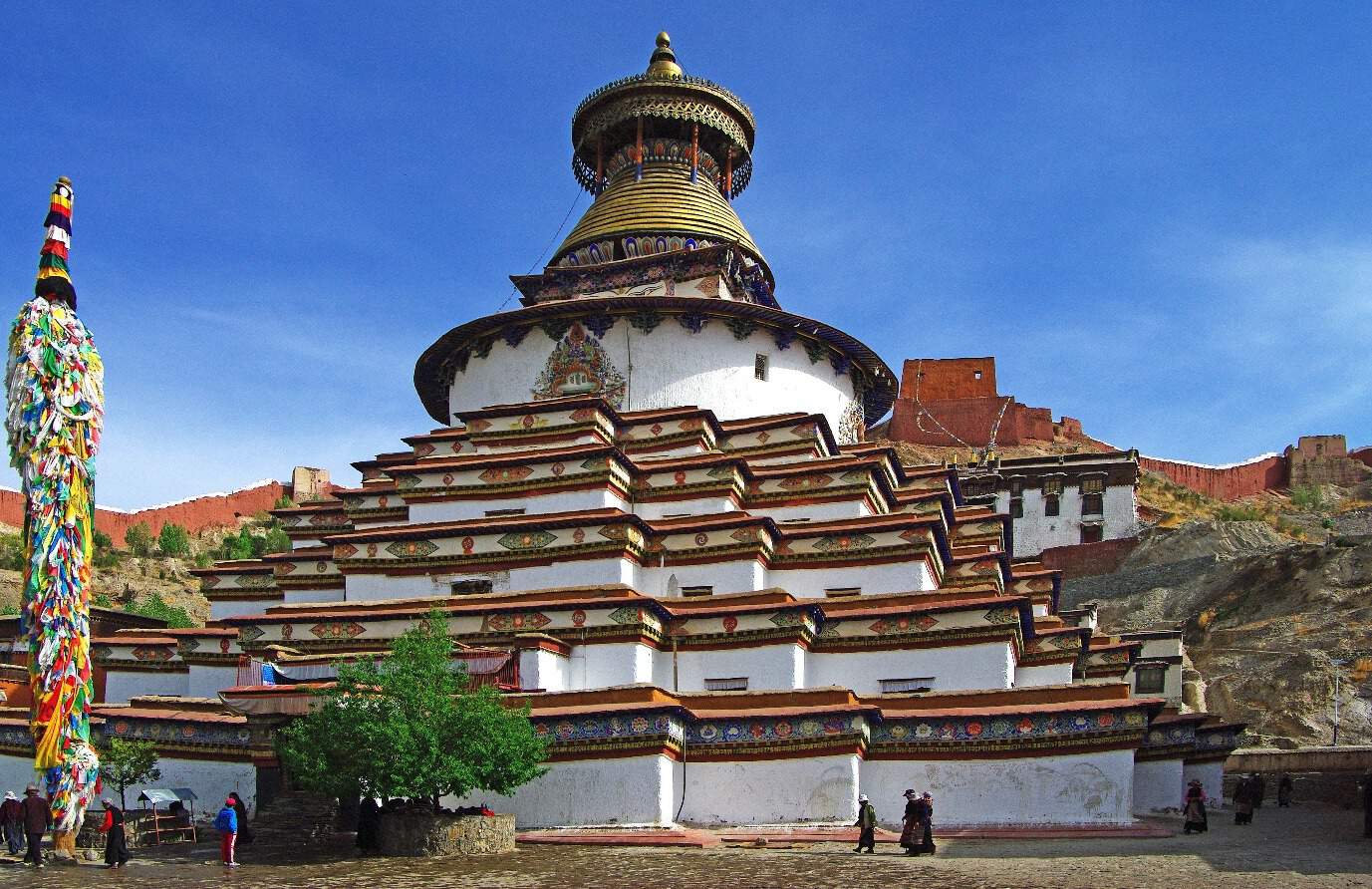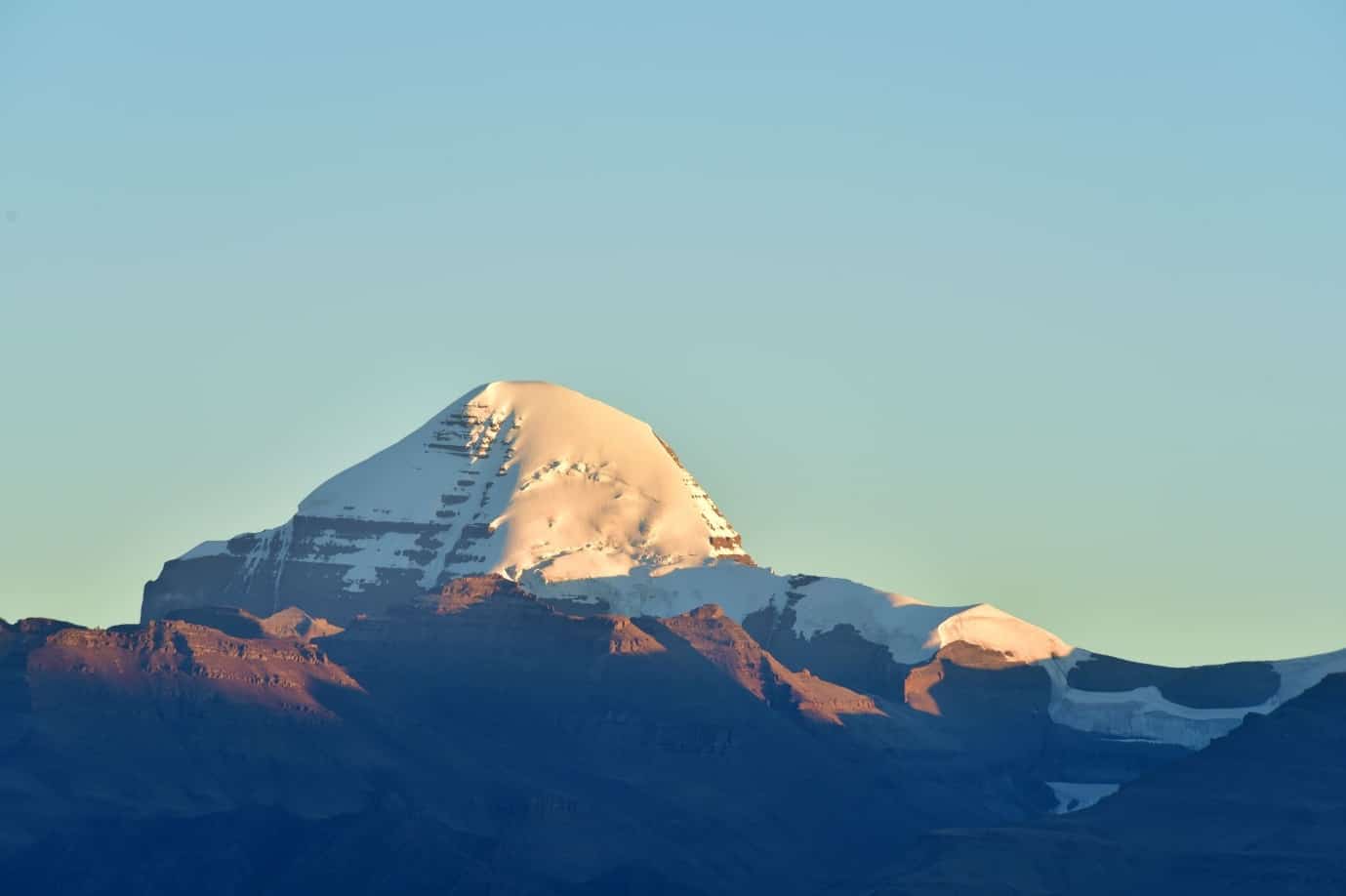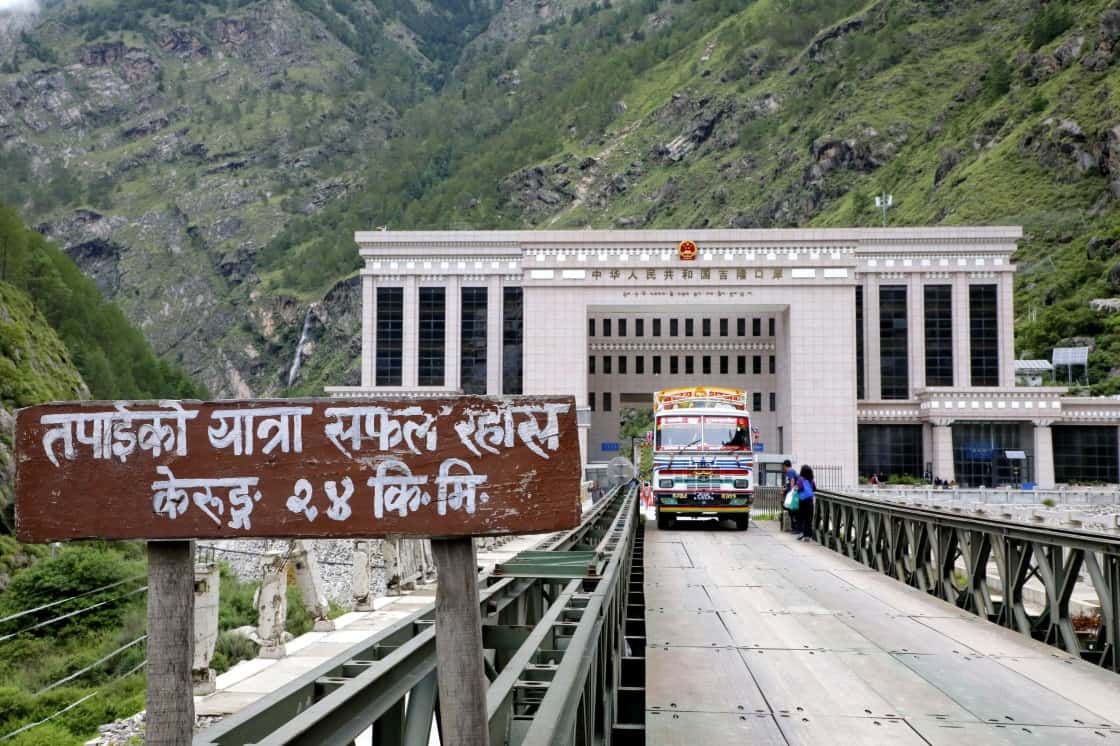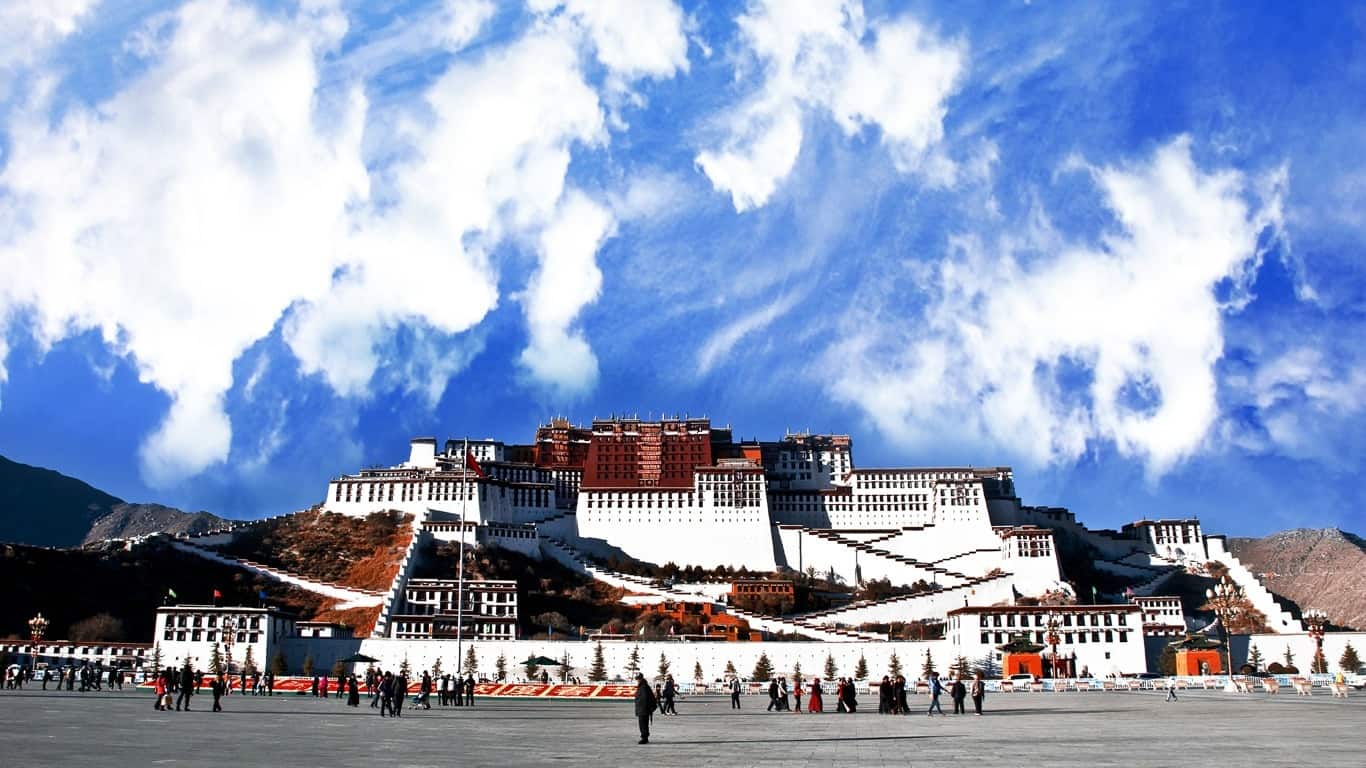Tibet is a vast land, with a multitude of things to see and do, and more mountains and lakes than you could ever imagine. From the stunning vistas of the mighty Himalayas and the multitude of holy lakes, such as Yamdrok, Manasarovar, and Namtso, to the stunning temples and monasteries that cover the region and the unique Tibetan culture that is infused with Tibetan Buddhism in every part of the local people’s lives. However, while there are a vast number of attractions across the region, there are some Tibet tours that are extremely popular, and which can give you the best of the Tibetan plateau and its unique culture.
Travel from Lhasa to EBC—the Most Popular Tour in Tibet
One of the best and most popular tours in Tibet, the tour that runs from Lhasa to Everest Base Camp (EBC) is an adventure that many people only ever dream about. However, in Tibet those dreams can come true, and you can get close to the massive mountain, traveling to the northern base camp from which many mountaineering expeditions have set off to attempt to conquer the world’s highest mountain.
Lhasa, the capital of Tibet since the seventh century, is one of the world’s most amazing cities, as well as being the highest capital city in the world. Home to more than a dozen monasteries and temples, including the sacred Jokhang Temple in the Lhasa Old Quarter, which holds the sacred statue of Buddha that was brought to Tibet by Princess Wencheng on the occasion of her marriage to the Tibetan King.
Outside Lhasa, the road to EBC follows the famous Friendship Highway, to the town of Gyantse, where you can view and explore the famous Kumbum Stupa, the only stupa of its kind in Tibet, which stands 32 meters tall and has 108 chapels within its nine levels. An auspicious construction, the stupa is the highlight of the Pelkor Chode Monastery, in which it resides, and is an amazing sight.

Further afield lies the second city of Tibet, Shigatse, the gateway to the Qomolangma National Park and Mount Everest itself. A delightful city with a myriad of delicious restaurants, it is also the home of the Tashilhunpo monastery, the traditional seat of the region’s second-highest incarnation, the Panchen Lama, and constructed by the first Dalai Lama in the 15th century.
From Shigatse, it is a long drive out to the famous base camp of Mount Everest, passing along the Friendship Highway for a while, before turning off to head south to the mountain itself. At the foot of the great peak, lying in the shadow of the mountain, is the world’s highest monastery, Rongbuk Gompa, from where you can get one of the best views of Mount Everest in the world. The monastery is also famous for its former abbot, who gave the name Tenzing Norgay to a small boy who later became one of the first two people to reach the summit of the world’s highest mountain.
The base camp itself is not the actual base camp of the mountaineers that make their attempts to scale the infamous and dangerous North Col, but lies a little way before the mountaineer’s base camp. Designated as the tourist base camp, it is the closest one can get to the face of the huge mountain without signing up for an expedition to the summit, and has one of the best views of the peak for photographers.
Travel to EBC can be done throughout most of the year, with the exception of late February and March, when Tibet is closed to tourists, although January may be a little cold and snowy. The best time is from April to June and Sept to Oct., and while it is possible to travel there in the summer monsoon months, there is no guarantee that you will be able to see the summit, due to the clouds that can often cover the peak.
Travel from Lhasa to Mt. Kailash via EBC— the Best Spiritual Tour in Tibet
If you are looking for a spiritual tour of Tibet, then look no further than the exciting tour from Lhasa to Mount Kailash, the most sacred mountain on the planet. Taking much the same route as the tour to EBC, this tour then continues on to the north, into Ngari Prefecture, to make a three-day trek around what is considered to be the mountain of the center of the universe, Mount Kailash.
Sacred in four religions – Hinduism, Buddhism, Jainism, and Bon – Mount Kailash is one of the most protected sites in the world, and no human has ever set foot on its black slopes. Shaped like an eroded pyramid, this massive peak rises 6,638 meters above sea level, and while it is nowhere near one of the highest mountains in the world, it stands a head and shoulders above the other mountains in the Gangdise Range that surround it.
Around the bottom of this sacred mountain is a trail that circumnavigates the whole mountain, stretching for 52 kilometers around the foothills of the peak, starting and ending in the small village of Darchen, below the southern face of the mountain. A holy ritual kora route, the trek is regularly done by Tibetan and Indian pilgrims, who come to the mountain in search of enlightenment and absolution. The trek normally takes around three days, and stops at two of the five sacred monasteries around the mountain, which have guesthouses to cater to the thousands of pilgrims that circumambulate the sacred mountain every month.

For non-pilgrims, this is the most arduous trek in Tibet, and one that takes you up to one of the highest passes you can trek over, Dolma La, which lies at 5,636 meters above sea level, and is strewn with prayer flags where pilgrims have stopped to pray and left blessings to be blown across the earth for the benefit of all living creatures.
An astounding tour, this is not one for the faint of heart, as it is a tough and rugged trek around the mountain. However, if you are determined to do it, it can be completed on a pony, which can be hired from the village of Darchen, and which can be ridden around the kora route. It is only the pilgrims that have to make the trek on foot.
Travel from Lhasa to Kathmandu via EBC—the Epic Overland Tour across Mighty Himalayas
An amazing journey of discovery and adventure, the tour from Lhasa to Kathmandu takes in two of the three Himalayan capitals, traveling across almost the entire Tibetan plateau, before dropping down over the border to the Nepali capital of Kathmandu, the world’s most exotic city.
The trip from Lhasa to Kathmandu takes around 7-8 days, and takes you to some of Tibet’s most popular and stunning attractions, as well as sending you down from the Himalayas to the delights of the Kathmandu Valley, the center of Nepali culture. Traveling by road across the region, you will pass by the stunning lake Yamdrok, with its fan-shaped branches stretching for miles in all directions, and then on to Gyantse, where you can see the Pelkor Chode Monastery and it famous 32-meter Kumbum Stupa. Then on to Shigatse, and finally EBC and Rongbuk Gompa, where you can enjoy the stunning views of the world’s highest mountain up close and personal.
Once you are done at Everest, you will travel to the newly opened border crossing into Nepal, at Gyirong Port. Opened for international travelers into and out of Tibet from Nepal in August of 2017, this crossing replaced the one between Zhangmu and Kodari after the earthquake that destroyed the crossing point in 2015. Now a world-famous crossing point, it is the last step of your journey through Tibet, as you pass through Chinese immigration to exit China, and walk across the Resuo Bridge, which spans the high Trishuli River Gorge between China and Nepal.

Once across, you will pass through Nepali immigration, where you can get your visa on arrival if you have not obtained one already, and cross into the stunning country of Nepal, the paradise of Himalayan trekkers. Getting from Gyirong Port to Kathmandu can be done by local bus or by shared private van, which takes around six hours to get to the Nepali Capital.
The tour from Lhasa to Kathmandu is one of the most popular tours in the region, and can also be done in reverse, starting in Kathmandu and traveling overland across the border and then on to Lhasa, taking in the sights along the way. An amazing and epic adventure, this is one of the best ways to tour Tibet, and is best done with a group, as you will get to share that exciting experience of standing in the shadow of the world’s highest mountain together.
Conclusion
Tibet is one of the world’s most enthralling destinations for tourists, and if you have the chance, you should come and visit, we would be happy to see you. While these are the most popular tours to take, they are not the only tours that can be taken in Tibet, and there are dozens of different tours and routes that you can take to explore the many exciting sights and aspects of this land of snows, the roof of the world, and the Third Pole. Just come and talk to us, and we can point you in the right direction to make your dream tour of Tibet a reality.
